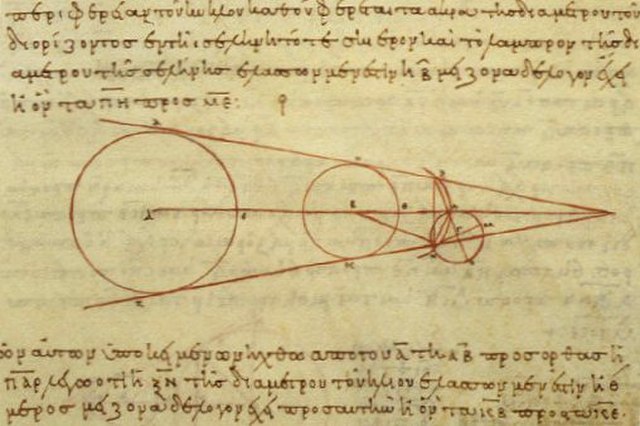Heliocentrism is a superseded astronomical model in which the Earth and planets revolve around the Sun at the center of the universe. Historically, heliocentrism was opposed to geocentrism, which placed the Earth at the center. The notion that the Earth revolves around the Sun had been proposed as early as the third century BC by Aristarchus of Samos, who had been influenced by a concept presented by Philolaus of Croton. In the 5th century BC the Greek Philosophers Philolaus and Hicetas had the thought on different occasions that the Earth was spherical and revolving around a "mystical" central fire, and that this fire regulated the universe. In medieval Europe, however, Aristarchus' heliocentrism attracted little attention—possibly because of the loss of scientific works of the Hellenistic period.
Andreas Cellarius's illustration of the Copernican system, from the Harmonia Macrocosmica
Aristarchus' 3rd century BC calculations on the relative sizes of the Earth, Sun and Moon, from a 10th-century AD Greek copy
An illustration from al-Biruni's astronomical works explains the different phases of the Moon with respect to the position of the Sun.
Nicholas of Cusa, 15th century, asked whether there was any reason to assert that any point was the center of the universe.
Superseded theories in science
This list catalogs well-accepted theories in science and pre-scientific natural philosophy and natural history which have since been superseded by scientific theories. Many discarded explanations were once supported by a scientific consensus, but replaced after more empirical information became available that identified flaws and prompted new theories which better explain the available data. Pre-modern explanations originated before the scientific method, with varying degrees of empirical support.
The obsolete geocentric model places Earth at the centre of the Universe.





